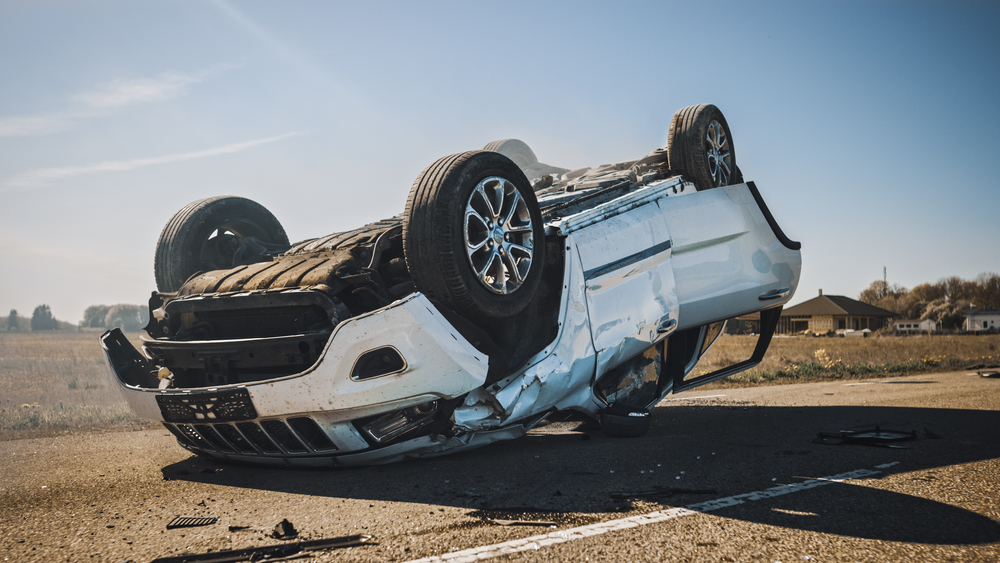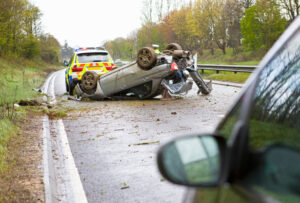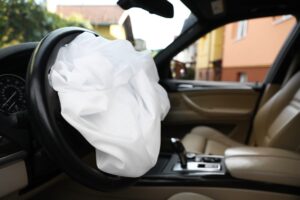Common Causes of Fatal Car Accidents

Each year, countless families are devastated by the loss of loved ones due to car accidents. Identifying the common causes of fatal car accidents is essential to understanding how these tragedies happen and what can be done to prevent them. Speaking with a knowledgeable car accident lawyer can also help families explore their legal options after a devastating crash.
Fatal collisions in Chicago, IL, and surrounding counties often involve specific patterns or behaviors. Here, we’ll explore these causes in detail and provide actionable insights.
What Causes the Most Car Accident Fatalities?
Many factors contribute to fatal car accidents, but certain behaviors and conditions stand out as the most dangerous.
Speeding
Speeding is one of the biggest contributors to fatal car accidents. When drivers exceed the speed limit, they have less time to react to sudden changes in traffic. For instance, navigating sharp turns or stopping for pedestrians becomes much harder at high speeds.
Speeding can also amplify the severity of a crash. Higher speeds increase the force of impact, making injuries more likely to be fatal. On busy roads near Chicago, this is especially dangerous during rush hours or poor weather.
Distracted Driving
Distracted driving includes activities that take a driver’s attention away from the road, such as texting, eating, or adjusting the radio. Texting is particularly dangerous because it combines three types of distraction – visual, manual, and cognitive. Looking at your phone even for a few seconds means traveling blind for hundreds of feet.
Around Chicago, this becomes a greater risk due to heavy traffic and complex intersections. Distractions in such areas can make accidents unavoidable.
Drunk Driving
Driving under the influence of alcohol or drugs remains one of the deadliest causes of car accidents. Impaired drivers have slower reaction times and impaired judgment, making it difficult to handle unexpected hazards. Drunk drivers are far more likely to swerve into other lanes, miss stop signs, or even drive the wrong way.
Fatal drunk driving accidents can happen at any time, but many occur late at night or over the weekend. Law enforcement in Illinois continues to monitor heavily traveled areas and holiday weekends to catch intoxicated drivers before tragedy strikes.
Are Intersections in Chicago a Major Danger Zone?
Intersections pose unique risks for drivers. Many fatal accidents happen when vehicles collide while turning or crossing through these busy areas.
Intersection Errors Lead to Fatalities
Failure to yield the right of way is a major cause of fatal accidents at intersections. This often happens when drivers hurry to beat a red light or fail to stop completely at a stop sign. Misjudging the speed of oncoming traffic also leads to collisions. Intersections are particularly dangerous for pedestrians and cyclists.
Red Light Running
Running a red light significantly increases the likelihood of fatal side-impact crashes. These T-bone collisions often result in catastrophic injuries. Across Illinois, some intersections now include red-light cameras to discourage this dangerous behavior.
What Role Do Weather Conditions Play in Fatal Car Accidents?
Severe weather can make driving in Illinois more dangerous, especially in winter when icy roads become a concern.
Winter Weather Increases Crash Risks
Slippery streets caused by snow and ice often result in cars sliding into other vehicles or off the road. Black ice is particularly deceptive and can catch drivers off guard. Drivers who don’t adjust their speed during storms are likelier to lose control.
Visibility is another factor. Heavy snowfall or fog can make it impossible to see other vehicles, leading to dangerous pileups.
Wet Pavement is Dangerous Even in Warmer Months
Rain and wet pavement are common throughout the year in Chicago and the surrounding suburbs. Hydroplaning, where vehicles lose traction and skid uncontrollably, becomes a danger during heavy downpours. Even mild rain can make stopping harder, especially for trucks and larger vehicles.
How Do Driver Behaviors Impact Accident Severity?
While external conditions like weather are dangerous, many deadly crashes trace back to specific driver actions.
Aggressive Driving
Aggressive behaviors, like tailgating, weaving between lanes, or road rage, make highways and city streets far more dangerous. Nearly every aggressive act behind the wheel increases the chance of a collision. Accidents can quickly escalate into fatal events when drivers refuse to give others enough space or make sudden maneuvers.
Fatigue
Driving while tired is another underestimated danger. Fatigued drivers are less alert and may even fall asleep at the wheel. Long hours on the road, especially for truckers or shift workers in Chicago, are a major cause of these accidents. The results can be just as deadly as alcohol-related crashes.
Pedestrian and Cyclist Deaths
Chicago and its suburbs are home to many pedestrians and cyclists, making these vulnerable groups more likely to be involved in fatal accidents.
Fatal pedestrian accidents often involve speeding, distracted driving, or failure to yield in crosswalks. On busy urban streets in Chicago, pedestrians are everywhere, and drivers who don’t stay alert risk causing devastating injuries.
Cyclists are frequently at risk when cars make unsafe turns or fail to check blind spots. Even protective gear like helmets cannot always prevent fatal outcomes in collisions with speeding vehicles.
How Road Design Contributes to Fatal Car Accidents
Poor road design is an often-overlooked cause of fatal car accidents. Chicago and its surrounding suburbs feature a dense network of streets, highways, and intersections, but not all are designed with safety in mind.
Roadways that are not properly planned or maintained can become dangerous, putting drivers, passengers, and pedestrians at risk. Some design flaws directly increase the likelihood of fatal accidents.
These include:
- Poorly Marked Intersections
Intersections with unclear lane markings, poorly timed traffic lights, or missing stop signs create confusion. Drivers may misjudge another vehicle’s intent or fail to yield, leading to deadly collisions. - Sharp or Blind Curves Without Warning Signs
Some roads, especially in suburban or rural areas near Rockford, feature unexpected twists or blind spots without adequate signage to warn drivers. Curves like these can cause sudden braking or swerving, which increases the chance of losing control or colliding with other vehicles. - Lack of Designated Crosswalks or Pedestrian Signals
Areas with heavy foot traffic, such as Chicago neighborhoods, frequently lack sufficient crosswalks or pedestrian-controlled stoplights. Without clear signage or a safe place to cross, pedestrians are at greater risk of being hit by speeding vehicles. - Inefficient Highway Merges and Exit Ramps
Poorly designed highway on-ramps or narrow merges, like some seen on Interstate 90 as it approaches the city, leave little room for drivers to join or exit high-speed traffic safely. Drivers who hesitate or merge too quickly into high-speed lanes may trigger rear-end or multi-vehicle crashes.
Chicago roadways
Illinois has hundreds of older roadways. While new designs incorporate modern safety standards, many older roads still have outdated layouts that can’t handle today’s traffic volume.
For instance:
- Certain stretches of the Eisenhower Expressway are known for bottlenecks caused by outdated lane designs and insufficient space during peak traffic hours. These conditions increase the risk of collisions, particularly at high speeds.
- Neighborhood streets in Chicago sometimes feature narrow lanes and improper intersections where two-way traffic squeezes through areas not adequately planned for high-volume driving. This can make head-on collisions more likely.
Suburban areas are also at risk, particularly in rapidly developing townships where road infrastructure hasn’t kept up with population growth. Road design mismatches like abrupt speed limit changes or uneven pavement can present unexpected challenges to drivers unfamiliar with the area.
Address These Issues
If someone has lost a loved one in an accident caused by poor road design, there are steps they can take to hold parties accountable, such as local governments or contractors who neglected safety requirements.
Legal representation may also assist in investigating whether a design flaw directly contributed to the accident. Road design claims often hinge on proving negligence in planning, construction, or maintenance, which a knowledgeable attorney can help explore.
Is Contacting Insurance Companies Necessary?
After a fatal car accident, insurance companies will likely reach out. It’s important to remember that their goal is protecting their financial interests, not yours. Avoid making detailed statements without consulting legal guidance. Instead, focus on the funeral arrangements and spending time with family.
Consider Legal Action
Filing a car accident claim is often the best way to seek justice and financial relief. These claims can help cover the costs of funeral expenses, lost income, and emotional loss. An experienced attorney can review the collected evidence and negotiate with insurance companies or take the matter to court if needed.
The Role of Vehicle Recalls in Preventing Fatalities
Vehicle recalls are issued when manufacturers discover defects that make their cars unsafe to drive. If these defects aren’t addressed, they can lead to accidents, sometimes claiming lives.
Unfortunately, many drivers remain unaware of recalls affecting their vehicles, which can be a hidden road danger.
Types of Safety Defects
Some vehicle defects can lead to accidents, especially if not repaired promptly. These include the following issues frequently seen in recalls:
- Faulty Airbags
Airbags are designed to save lives, but defective ones can fail to deploy or explode and send metal fragments into the cabin. The Takata airbag recall is a widely known example, affecting millions of vehicles and causing several fatalities across the U.S. - Brake System Failures
Problems with hydraulic systems, anti-lock brakes, or other components can reduce braking power. A vehicle unable to stop in time increases the likelihood of rear-end collisions, which can be catastrophic, especially on busy highways like I-294 near Chicago. - Steering Mechanism Issues
Defective steering components make it challenging to control a vehicle. Sudden loss of steering on densely packed streets, such as downtown Chicago or Rockford, can lead to high-speed collisions or cars drifting into oncoming lanes. - Engine or Electrical Malfunctions
Problems like overheating engines, electrical shortages, or sudden power loss can unexpectedly shut down a car. Vehicles that stall on highways or active intersections create immediate hazards for other drivers.
Check for Recalls
It’s easier than many people think to check whether their car is included in a recall. Here are key steps you can take to protect yourself and others on the road:
- Use the NHTSA Website
The National Highway Traffic Safety Administration (NHTSA) offers a free recall search tool on their website. By entering your car’s Vehicle Identification Number (VIN), you can find any recalls that apply to your car. Illinois drivers, especially those who commute daily on Chicago-area highways, should make this a regular habit. - Register Your Vehicle with the Manufacturer
Manufacturers typically notify registered owners of recalls. If you’ve purchased a used car, make sure the manufacturer has your current contact information, so you don’t miss safety updates. - Inspect Used Vehicles Before Purchase
When buying a used car, ask the dealer for a complete recall history. Not all recalled vehicles are repaired by previous owners, and you don’t want to inherit a safety risk unknowingly. - Stay Aware of Local News
Some recalls receive widespread attention, especially when involving large vehicles. Pay attention to local news outlets in Chicago or surrounding suburbs, as they often report on recalls affecting popular car models.
Defective Vehicles Can Cause Fatal Accidents
When a fatal car accident is tied to a defect that was the subject of a recall, victims’ families may have grounds for legal action. Manufacturers may be held liable if they failed to address known safety concerns adequately.
Legal representation can help investigate whether a recall or lack thereof played a part in the accident.
What Should You Do if a Fatal Accident Claims a Loved One?
Losing a family member in a fatal car accident is one of the hardest experiences anyone can endure. It’s important to have someone on your side to guide you through this difficult time.
Our personal injury attorney at Vito & Dollenmaier Law is here to help you hold the responsible parties accountable. Call (224) 539-8821 for a free consultation today. We will handle your case with care and work tirelessly to seek justice for your loved one.


